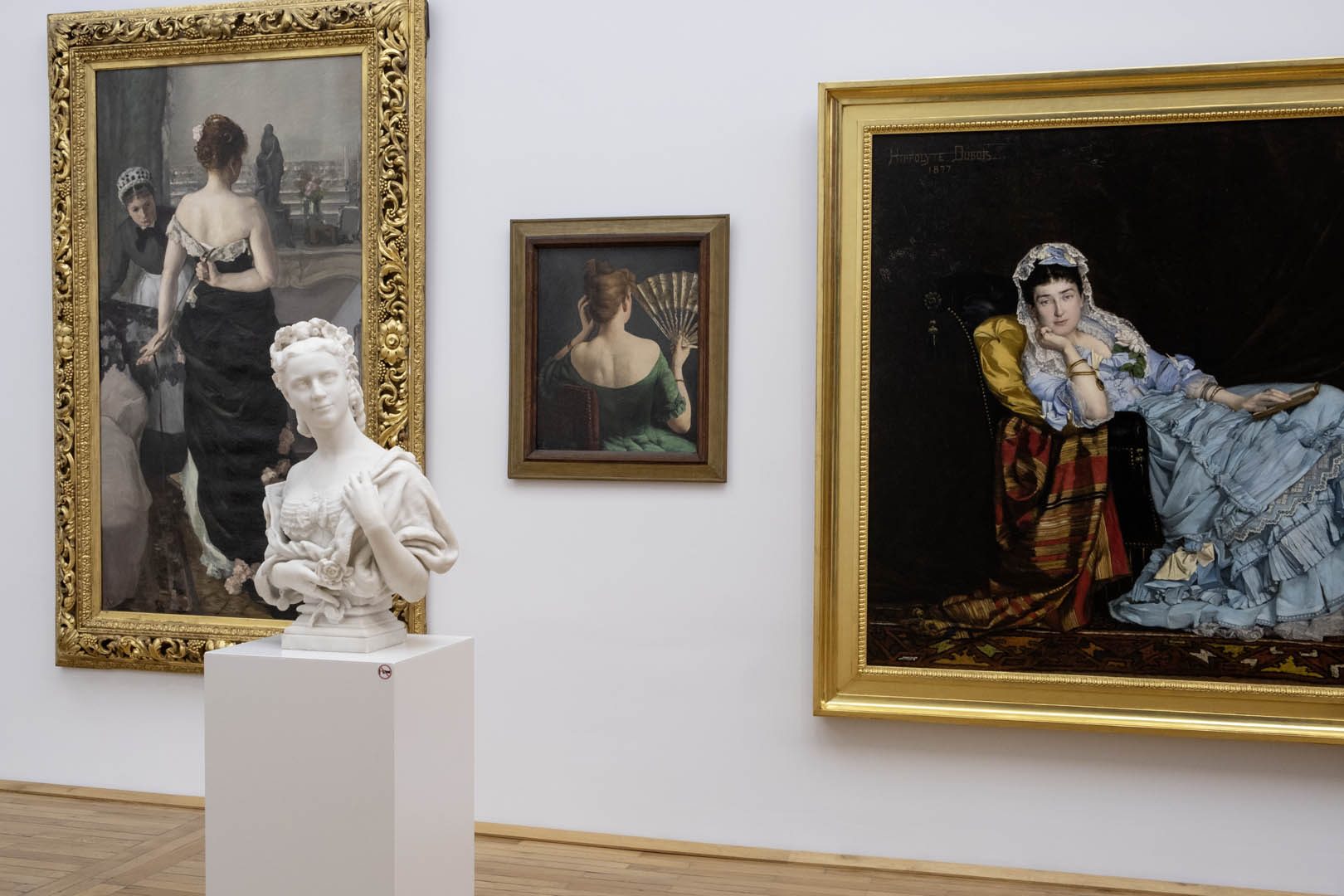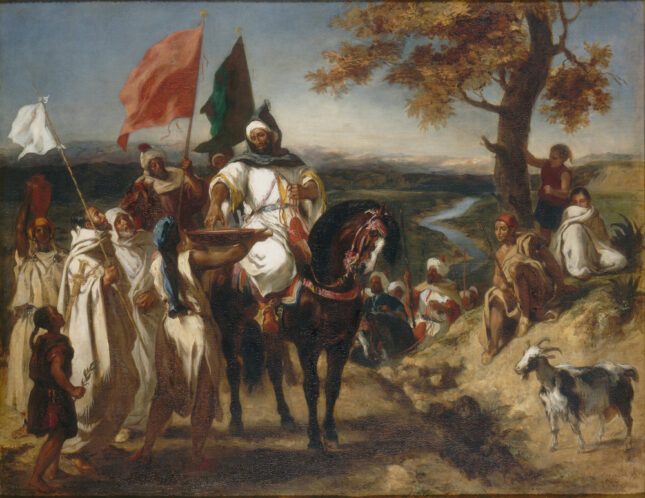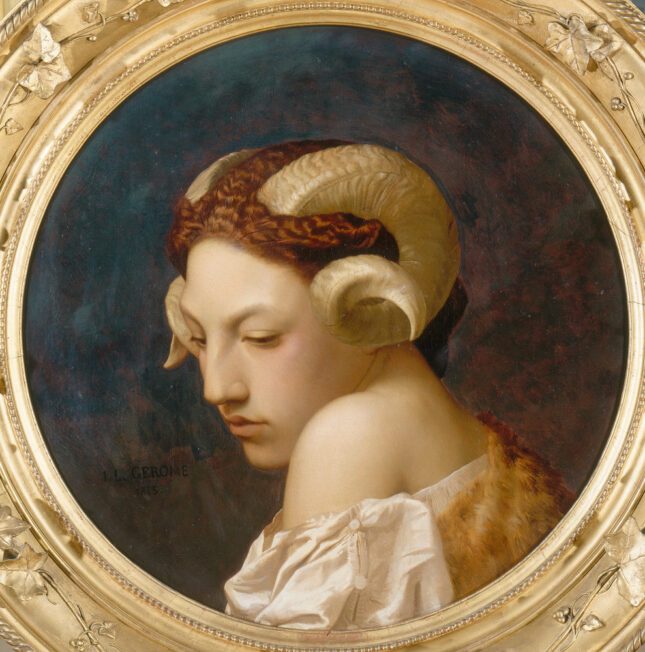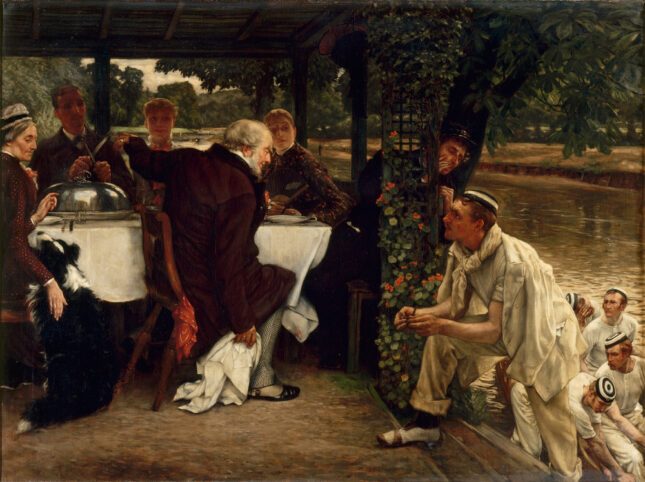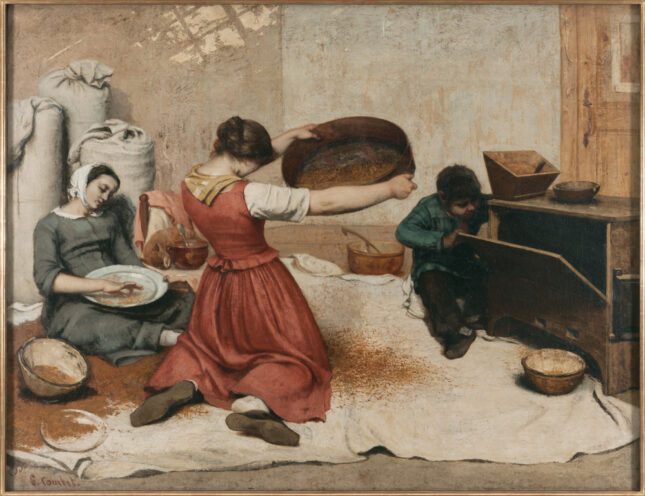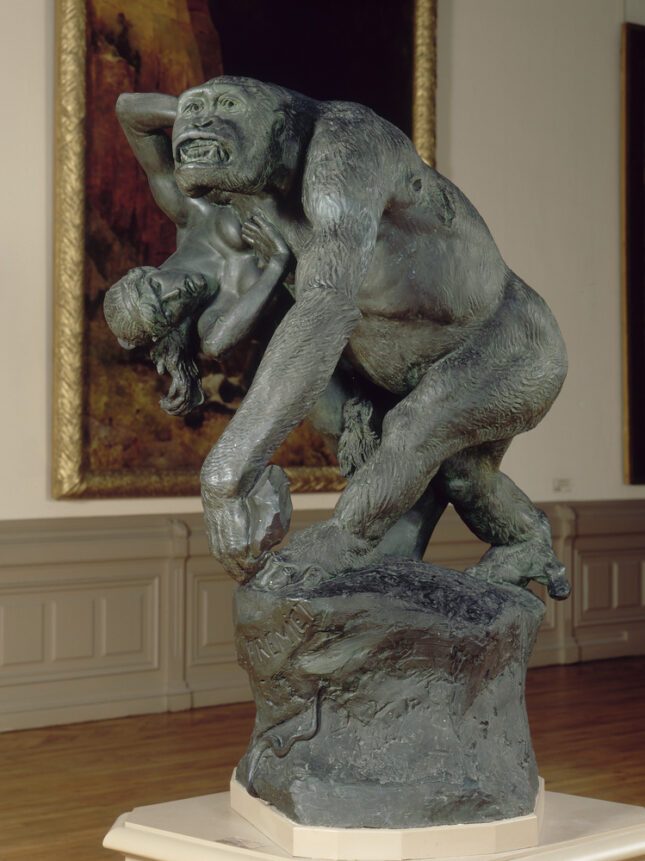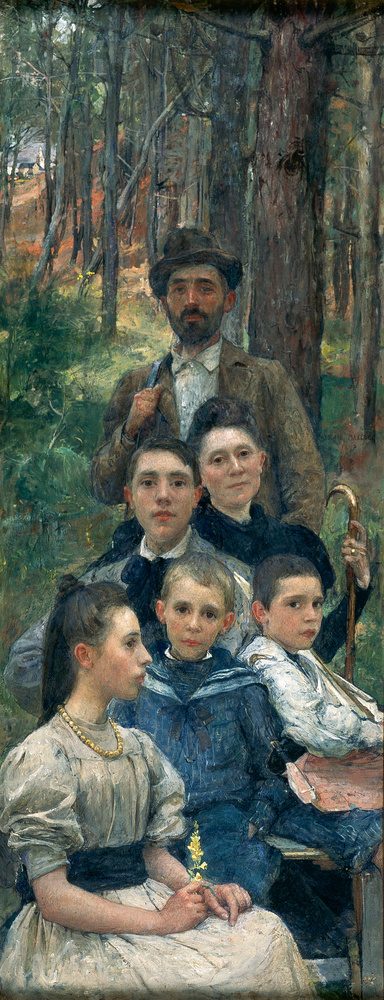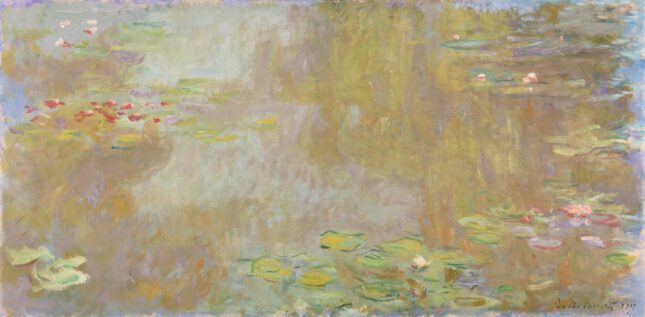Rich and coherent, the 19th-century collection at the Musée d’arts de Nantes follows the canons of an official art as represented by Paul Delaroche, Hippolyte Flandrin, Alexandre Hesse or the Nantes-based artist Jules-Elie Delaunay. It is also remarkable for its powerful and distinctive pieces by Ingres, Courbet, Gérôme or Delacroix, thanks to bold acquisition choices from the 1830s. From the fiery Battle of Nazareth by Antoine-Jean Gros (1799) to the Nabi formal and pictorial style of The Embroideress by Paul Sérusier (1925), the museum invites visitors on a journey back through this century in pictures.
-
The collection
For its museum, newly opened to the public in 1830, the City of Nantes set its sights on art from its time, which it acquired at the Salon des artistes français in Paris, salons in Nantes and from antique dealers. This is how artworks by Eugène Delacroix and Gustave Courbet came into the museum’s safekeeping during their lifetime. Woman’s Head with Ram Horns by Gérôme was the first piece by this artist to enter a French public collection.
The purchase in 1853 of the Portrait of Madame de Senonnes by Ingres was a dazzling addition to the collection, which also gained two major donations during this time. In 1852, the Clarke de Feltre collection brought in 63 pieces from the 1830s-1850s, with paintings by Paul Delaroche, Hippolyte Flandrin and Horace Vernet. This was followed in 1854 by some twenty 19th-century artworks from the Urvoy de Saint Bedan collection. Antoine-Jean Gros, Ary Scheffer, Théodore Géricault, Jacques-Raymond Brascassat…
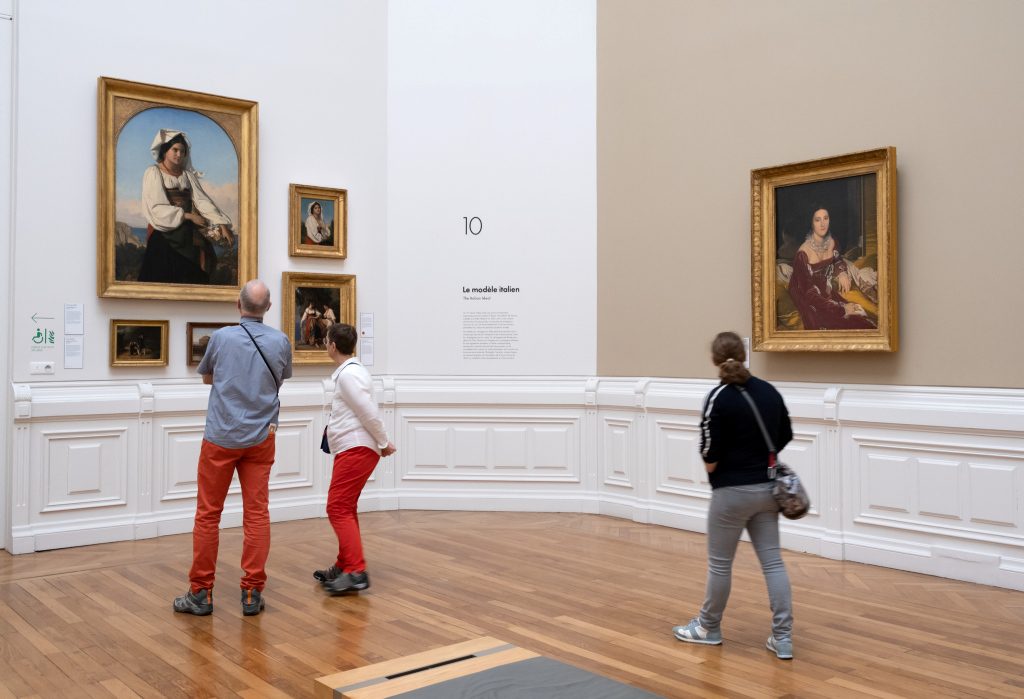
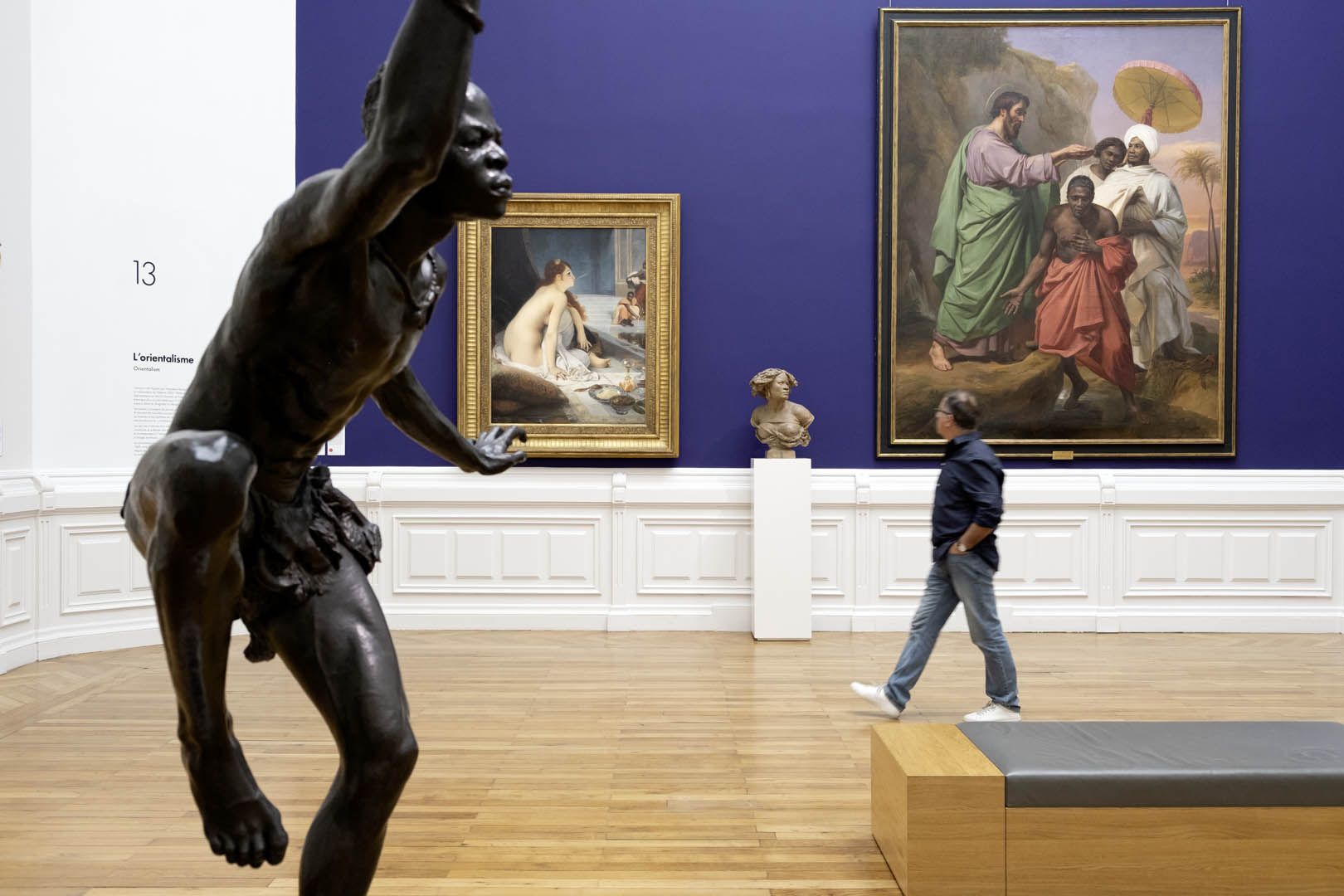
This original and ambitious acquisition policy, rounded off by transfers from the State, also reflects the tastes of its day by highlighting certain pictorial movements, such as the Barbizon School with pieces by its Nantes representative Jules Dupré and Orientalism with The White Slave by Jean-Jules-Antoine Lecomte du Nouÿ (1888). The museum crowns its collections of history paintings (Charlotte Corday de Paul Baudry, 1861) and sculpture with the striking Gorilla Carrying Off a Woman (1887) by Emmanuel Fremiet. Academic art from the latter half of the 19th century is also well represented with artworks by the Nantes-based artist Jules-Élie Delaunay, some of which were bequeathed.
Pieces by James Tissot, a high-society painter, the Symbolist painter Edgard Maxence and Pre-Raphaelite Edward Burne-Jones conclude the panorama of an outstanding collection, among the richest in French museums, the most remarkable pieces of which have truly risen to iconic status.
-
The layout
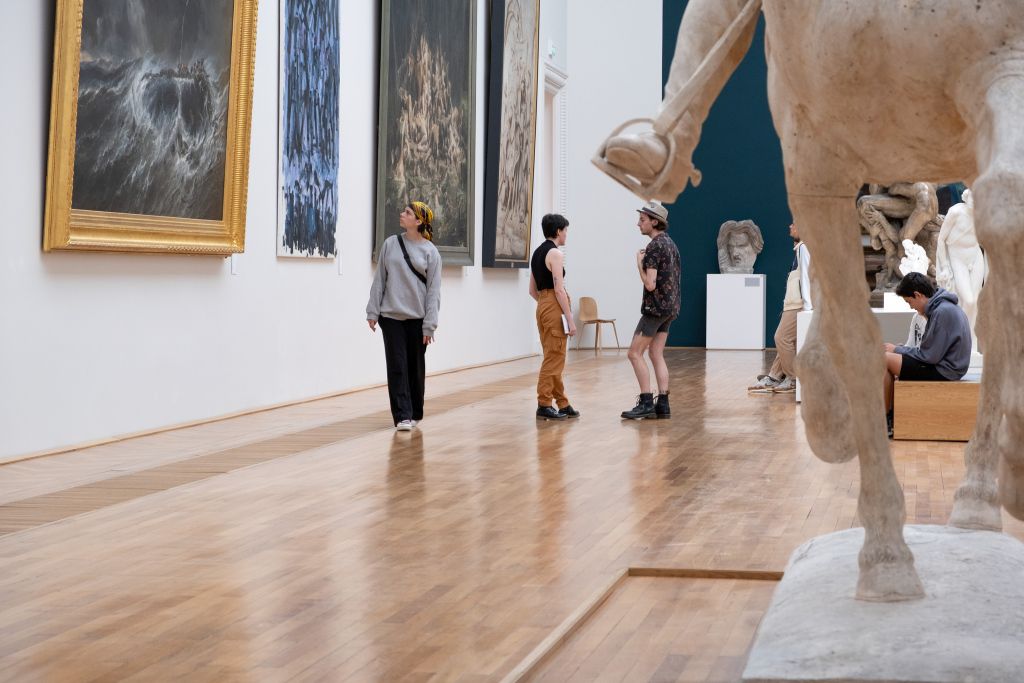
On a tour around the collection, visitors will find the great movements of 19th-century painting, Romanticism, Realism, Orientalism, Naturalism and Symbolism, exhibited with special attention to the artistic, social and political context of their creation. The inclusion of contemporary artworks by James Guitet, Daniel Soulages and Joan Mitchell encourage a cross-chronological dialog between the artists, offering up a cultural and visual experience instead of a linear narrative.
This thematic and cross-cutting approach unveils the contrasting vision of artists happy to abide by or intent on moving away from an academic art style that still prevailed at the Salon – Jules Elie Delaunay, for example, in the former case and Gustave Courbet in the latter.
It is a reminder that through plein-air painting (i.e. painting outdoors), painters the likes of Camille Corot, Jules Dupré and Eugène Boudin, then Claude Monet, from woodland scenes to seascapes, engaged in new ways of depicting the world. Enthusiasm for the Orientalist artworks by Rudolph Ernst, Eugène-Alexis Girard and Jean-Léon Gérôme grew against the backdrop of the abolition of slavery decree (1848) and France’s colonial expansion, and chimed with a wealthy urban bourgeoisie’s need for exoticism. This high society had their portraits painted, decked out in all their finery, in the latter half of the 19th century by Paul Baudry, Jules Elie Delaunay and James Tissot, but women were still portrayed in a stereotypical manner: as mothers, seducers, victims or outcasts (A female stigmatic in the Middle Ages, Georges Moreau de Tours, 1895).

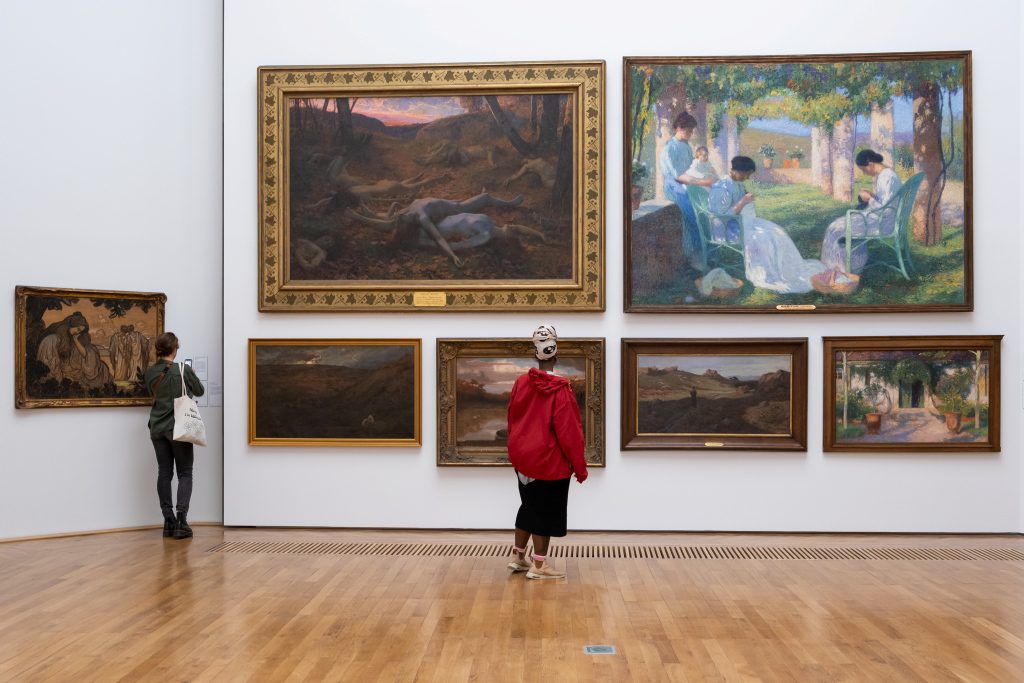
As they explore the galleries, visitors will see how painters shook up the hierarchy of genders. History painting (Xavier Sigalon) was reinvented in the style of historical gender painting conducive to writing a national narrative (Eugène Roger). Everyday life and work were elevated to great historical painting scenes, with a realism upheld by Gustave Courbet in The Wheat Sifters (1853). References to political crises and successive wars questioned the portrayal of power and warfare (In front of ‘The Dream’, Paul Legrand, 1897).
Visitors are also given an opportunity to escape to imaginary and spiritual worlds around Lady Frances Balfour by Edward Burne-Jones (1880), with diverse trends represented by Louis Welden Hawkins, Edgard Maxence, Alexandre Chantron and Jean Benner in a broad take on Symbolism.
This journey through the 19th century ends with artworks by Claude Monet, Louis Cylkow, Paul Signac, Émile Bernard and Paul Sérusier, a reminder that these painters, by turning their backs on the need to stay true-to-life, and toward sensation, form and color, paved the way to modern art.
-
Key Artworks
Key Artworks
-
Podcast
Bruits de couloir
Une série de podcasts du Musée d’arts de Nantes.
Alors qu’elles changent de place dans le musée, les œuvres d’art vous racontent leur histoire, d’hier et d’aujourd’hui. -
In video
La Ballade de Lénore de Emile-Jean-Horace Vernet est partie en voyage. Pendant quelques mois, elle va séjourner au Château de Versailles pour une grande rétrospective dédiée au peintre Horace Vernet (1789 - 1863). Découvrez les coulisses de sa grande aventure, de son départ du musée à son arrivée à Versailles.
Une vidéo imaginée, écrite et réalisée par les équipes du musée.
Cinq ans après sa réouverture en 2017, le Musée d’arts de Nantes a ouvert un ambitieux chantier de réaccrochage de ses collections permanentes. Après le rez-de-chaussée du Palais avec l’art ancien en 2022, les collections du 19ᵉ siècle profitent à leur tour d’un réaccrochage complet, réalisé progressivement pendant l’été 2023.
Découvrez les coulisses de ce remarquable projet !
